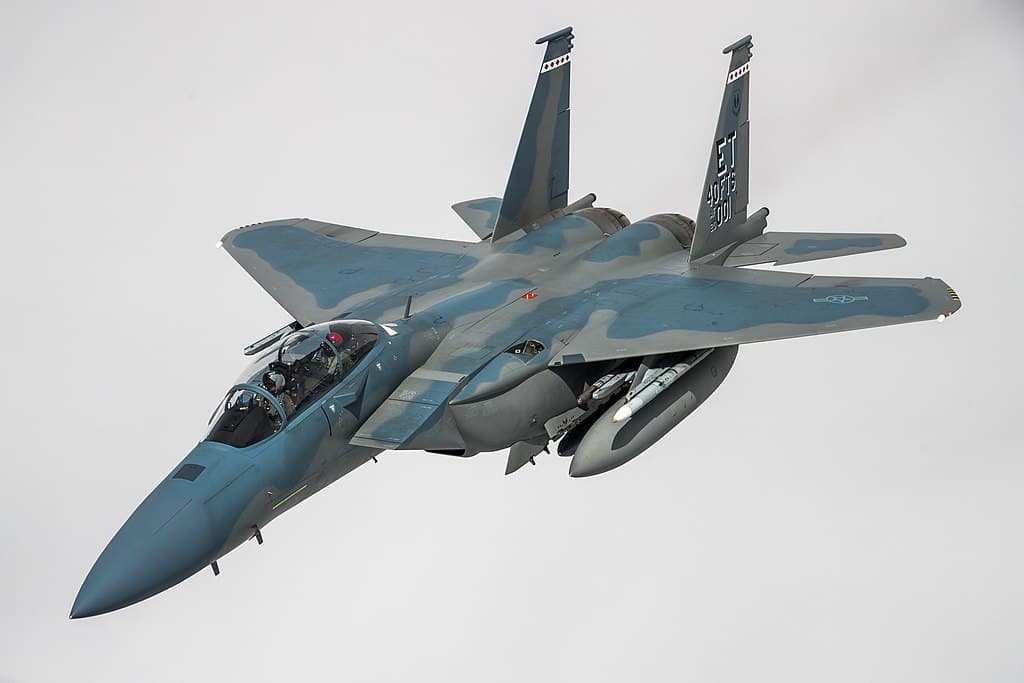Aerospace
Indonesia Announces Commitment to Acquire Boeing F-15EX

During the visit of Indonesia’s Minister of Defence Prabowo Subianto to the United States, the Republic of Indonesia and Boeing shared their resolve to complete the sale of 24 F-15EX aircraft to Indonesia, subject to U.S. government permission.
Following a tour of the F-15EX assembly line, Air Vice Marshal Yusuf Jauhari, Head of Defence Facilities Agency, Indonesia Ministry of Defence, and Mark Sears, Vice President and Programme Manager for Boeing Fighters, signed a Memorandum of Understanding (MoU) today at the company’s St. Louis facility.
With digital fly-by-wire flight controls, new electronic warfare system, an all-glass digital cockpit, and the newest mission systems and software capabilities, the F-15EX is the most modern version of the F-15 ever manufactured. These features will all be used to deliver the new F-15IDN.
The F-15EX’s capabilities are the result of years of experience that we put into them. There is not a fighter in the world quite like the F-15, and Indonesia’s air dominance capabilities will soar through this platform, according to Sears. “Boeing is ready to support this effort and remains a committed partner to the US government in advancing international security objectives with allies and partners around the world.”
Boeing Unveils F-15 Qatar Advanced Jets(Opens in a new browser tab)
For nearly 75 years, Boeing and Indonesia have collaborated to assist the growth of the nation’s aerospace and defence capabilities through training, supply chain development, and partnerships. Today, Boeing’s participation in Indonesia includes efforts to develop skills throughout the local industry, supply chain, commercial aviation, defence, and space. Seven nations throughout the world are currently using the F-15.

Aerospace
Boeing Transfers Rocket Stage to NASA, Paving Way for Human Moon Mission

Boeing has achieved a significant milestone by providing NASA with the second core stage of the Space Launch System (SLS) rocket.
This crucial component, crafted at NASA’s Michoud Assembly Facility (MAF), is set to propel the Artemis II crew into lunar orbit, marking humanity’s return to deep space after a 50-year hiatus.
The monumental Boeing-built rocket stage, the largest element of the Artemis II mission, will embark on a journey aboard the Pegasus barge, traveling 900 miles to NASA’s Kennedy Space Center.
Comparison of two legendary aircraft B777x vs B747 aircraft:Click here
Upon arrival, it will be meticulously integrated with other essential Artemis II components, including the upper stage, solid rocket boosters, and NASA’s Orion spacecraft within the iconic Vehicle Assembly Building. This intricate integration process is a vital step toward the eagerly anticipated Artemis II launch, slated for 2025.
“Boeing-built products helped land humankind on the moon in 1969, and we’re proud to continue that legacy through the Artemis generation,” remarked Dave Dutcher, vice president and program manager for Boeing’s SLS program. “Together, with NASA and our industry partners and suppliers, we are building the world’s most capable rocket and paving the way to deep space through America’s rocket factory in New Orleans.”
NASA, Lockheed Martin Reveal X-59 Quiet Supersonic Aircraft:Click here
The delivery of Core Stage 2 marks a significant achievement in the evolution of the SLS rocket. Towering over 200 feet and powered by four RS-25 engines, this core stage, coupled with two solid-fueled booster rockets, will generate a staggering 8.8 million pounds of thrust. This immense power is crucial to launching Artemis II and future missions into the vast expanse of space.
The SLS rocket stands unparalleled in its capability to transport both crew and substantial cargo to the moon and beyond in a single launch. Its extraordinary capacity will facilitate the delivery of human-rated spacecraft, habitats, and scientific missions to destinations including the moon and Mars, ushering in a new era of space exploration.
-

 Travel1 week ago
Travel1 week agoAir India to Expand US Operations with Three New Routes After a Decade
-

 Travel2 weeks ago
Travel2 weeks agoWhy We Should Avoid These Stamps in a Passport
-

 Airlines1 month ago
Airlines1 month agoInvestigations Reveal Fake Chinese Titanium in Boeing and Airbus Jets
-

 Tech4 weeks ago
Tech4 weeks agoChina’s CATL Plans 1,800-Mile Electric Plane Launch by 2027
-

 Airport3 days ago
Airport3 days agoTop 10 Largest Airports in the World by Size
-

 Aerospace4 weeks ago
Aerospace4 weeks agoChina’s Fighter Jets Turn Wings into Autonomous Drones
-

 Airlines4 days ago
Airlines4 days agoAir India Rolls Out A350s for Delhi-New York JFK and Newark Routes
-

 Defence3 weeks ago
Defence3 weeks agoBoeing Enhances Chinook with New Engines and Block II Upgrades at $96 Million







